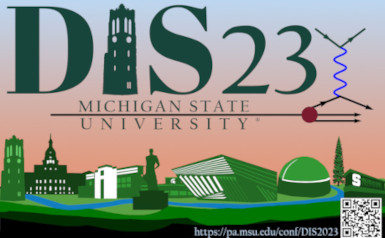Speaker
Description
Generalized parton distributions (GPDs) are off-forward matrix elements of quark and gluon operators that work as a window to the total angular momentum of partons, making it possible to solve the spin puzzle that emerged after EMC measurements. In addition, GPDs enable tomography of the nucleon allowing to study spatial distribution of partons as a function of momentum, providing clear imaging of the nucleon. To access GPDs one needs to look into exclusive processes, such as deeply virtual and timelike Compton scattering (DVCS and TCS), for both of which there is already experimental data. However, at LO these processes are mainly sensitive to GPDs in a restricted kinematic domain, namely $x =|\xi|$, where $x$ represents the average fraction of longitudinal momentum carried by an active parton, while $\xi$ is the so-called skewness parameter. To directly probe LO GPDs at $x \neq |\xi|$, it was proposed to study double deeply virtual Compton scattering (DDVCS), where an electron beam scatters off a nucleon and produces a lepton pair. Such sensitivity is possible thanks to the extra virtuality with respect to DVCS and TCS, which modifies the form of the coefficient functions in the hard part of the process. Existence of two independent virtualities results in the rich analytic structure of DDVCS amplitude, being the consequence of a mixed spacelike-timelike nature of the process.
In the last years, due to the features described above, there has been a growing interest in DDVCS. Because of that, in this talk, I present a new formulation of DDVCS based on the methods developed by R. Kleiss and W. J. Stirling in the 1980s. These techniques render expressions for amplitudes that are perfectly suited for phenomenology. Elements of impact studies, including predictions for experiments such as JLab12, JLab20+ and the Electron-Ion Collider (EIC), have been studied by means of PARTONS software and EpIC Monte Carlo event generator, and will be shown as well.
| Submitted on behalf of a Collaboration? | No |
|---|---|
| Participate in poster competition? | No |




